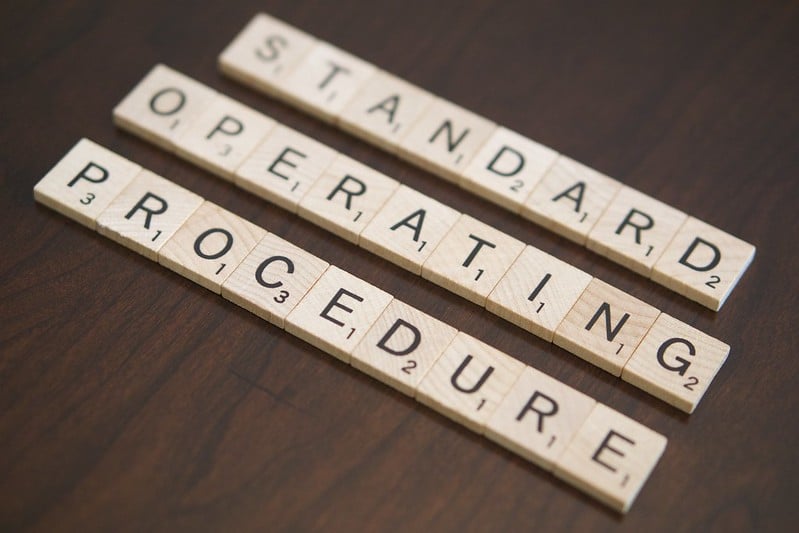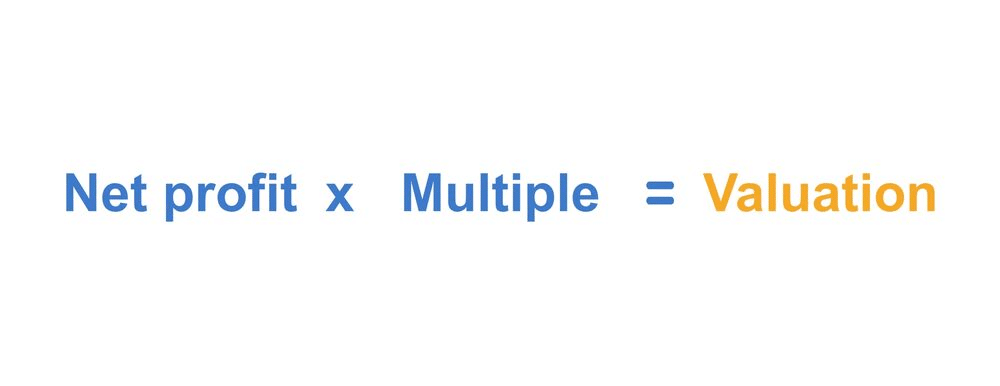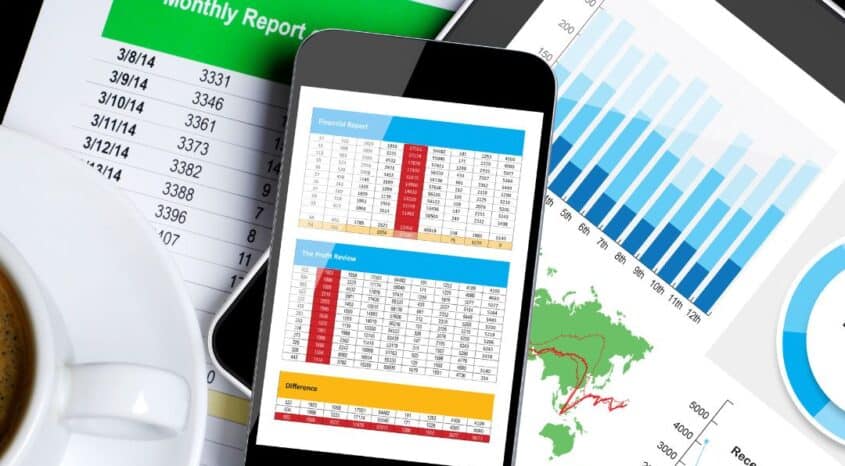The best way to have peace of mind about your business is to ensure it runs like a well-oiled machine, earns healthily, and is secure against external threats.
Your skills and experience determine how your business operates in particular areas. As an ecommerce store owner, you might excel at the operations side of your business, but struggle with your SEO. Another business owner could be great at marketing, but terrible at inventory management. All business owners have strengths and weaknesses, but it’s important to build a solid foundation for your business so it can fire on all cylinders.
What is required to set your business up to drive the greatest possible amount of revenue? Let’s take a look at the five best ways to set up your business for success.
1. Organize your operations
The foundation of a streamlined business is operations. When you set up operational processes to be as seamless and repeatable as possible, you are freed up to focus on other areas of your business.
On the flip side, without efficient processes in place, you’ll spend a lot of time and energy just keeping your business running, ultimately preventing you from scaling it up.
A straightforward way to make your operations more efficient is to create standard operations procedures (SOPs).
SOPs are documented processes that allow you to easily carry out repetitive tasks, basically serving as step-by-step instructions for tasks in the form of walkthrough documents, checklists, and video walkthroughs.
A simple example of an SOP is to have a checklist for each step you need to complete to place your next inventory order, from forecasting your demand through to contacting the supplier and making the order.
SOPs make it easier to run your business, as they encourage you to think about how you can make your operational tasks repeatable or remove them altogether if need be. Not only that, but they reduce the number of hiccups that occur in the day-to-day operations of the business.
Human error is unavoidable, but using SOPs can lower the chances of making mistakes by reducing the chances of forgetting a step or carrying out the operation incorrectly.
When you take the time to sit down and plan out your operations to make them as efficient and repeatable as possible, you set your business up to be easier to run. You might even be able to make some areas of operation hands-off entirely.
2. Outsource and step out of your business
Once you set up your SOPs, you can hand them over to employees, so they can take over those operations. You can determine which operations require your management and which don’t, by assessing the tasks and judging whether they depend on your expertise to be carried out effectively.
Outsourcing can be difficult for business owners; their business is very important to them, and they can feel the need to be involved in all parts of it to maintain control of their cash flow.
However, in our experience of working with hundreds of ecommerce owners, we’ve found that delegating (to the right people) can actually help secure your cash flow.
Like all business owners, you have your strengths, as well as weaknesses. Instead of putting energy into areas in which you aren’t particularly strong, you should hire people capable of carrying out the task to the same degree as or even better than you could.
Once you have a team in place, even if it is working remotely, you can still maintain workplace culture and team connectivity for optimal results.
Third-party logistics (3PL) solutions
Mundane tasks that don’t require a high skill ceiling can be outsourced. For example, while some ecommerce owners quality check and package their own products, it’s not the best use of their time.
There are many third party logistics companies (3PLs) who can carry out product packaging and quality checks for you. Imagine how much time you would save if you and your team didn’t have to physically pack your own products? Not only would this save space in your warehouses, but you can use that time to expand the business in other ways.
Virtual assistants (VAs)
If you’re already using a 3PL service, then the next place to start outsourcing is to look for a virtual assistant (VA).
VAs are great for your business because they are more cost effective to employ than full-time, on-site employees, and they help save you hours of work. Once the day-to-day tasks necessary to keep your business running are accounted for, you are free to focus on the growth of your business.
With this extra time, you could carry out extensive product research and launch new products to increase your revenue stream, explore new marketing channels, or expand your business into new markets, like wholesale or Amazon.
Taking out software subscriptions
Some of your operations might not even require an assistant!
Don’t forget, your business is online, and in the online world, many software tools can automate procedures. While software does take a portion of your revenue, its benefits remain, and once you’ve set up your software to take over an operational task, you are taken out of the equation completely.
Advanced software solutions allow you to explore ways to reduce your business expenses or increase your revenue that you might not have been aware of.
Solutions that deal with data, such as Brightpearl, work much more quickly and more effectively than a human could. They are usually adaptable and can scale with your business, and they can provide data insights that you can use to improve your profit margins.
Employ freelancers
If your strengths are not in the creative and marketing sides of your business, many freelancers out there have the design skills to create a brand you’re proud of, by improving the look of your packaging and online store, for instance.
If you want to explore paid advertising but don’t have the skills—or time to develop the skills—then you can look to ad agencies or freelancers who have the experience needed to run successful ad campaigns.
There are many opportunities for outsourcing that can open up the doors for you to scale your business and brand.
3. Increase your margins by lowering costs
Few ecommerce store owners are aware of a simple way to reduce COGS (cost of goods sold). Others know about this tactic and fear it, but they need not.
You can reduce your COGS by asking your suppliers for better rates.
If you’re generating regular sales for a supplier, it’s in their best interest to keep you as a client. If you’ve worked with your supplier with few or no problems, you probably have a good relationship with them, which gives you a good basis on which to ask for better production rates.
Another way to reduce your expenses is to look for alternative suppliers who offer the same product. It can’t hurt to shop around for suppliers who offer the same product at the same level of quality but for lower prices.
Beyond the goods themselves, you can reduce expenses by optimizing your inventory management. Inventory stockouts and over-ordering can sink your revenue or skyrocket your expenses. Getting on top of your inventory ordering will help you avoid any dramatic drops in earnings and secure your cash flow.
The best way to plan your inventory is to forecast future demand for your products. You can do this by looking at your own sales history. You can note recurring trends, such as seasonality, and anticipate how much inventory you need based on the time of year.
You should also consider changes your business has gone through over the past months or years. If you’re seeing any substantial growth or decrease in sales, you want to bear it in mind when forecasting inventory. Upcoming national holidays and sales events, and your sales history around those times, should also be taken into account.
4. Increase your margins by boosting revenue
The other (and possibly the most obvious) way to increase your margins is to boost your revenue.
In most cases, the amount of traffic your store receives is correlated to the number of sales and amount of revenue it makes. The two main ways by which ecommerce stores get traffic are organic search and paid advertising.
If you perform more highly in one channel or the other, then it’s worth looking into developing the other traffic channel, or channels, to further increase your revenue.
If your store is weaker on the organic search side, carry out some SEO work to increase your store’s rankings for relevant keywords. If it’s weaker on the paid ads side, start launching some test campaigns to drive some targeted paid traffic to your website.
The power of inbound traffic
The best way to boost your SEO is to create content around your niche and products. You can outsource this to specialist writers or a content agency if you have the funds to do so, or you can conduct your own keyword research and do it yourself.
You can also generate organic traffic from social media channels like Facebook and Instagram. We see quite a few businesses do well on Pinterest, too, particularly those selling visual products; it is, in fact, the social channel that drives the most organic sales.
The best thing about organic traffic is that it’s cheap. It doesn’t cost anything to create content and add it to your site if you do it yourself, and it’s cost effective even if you hire a writer.
Social media also tends to be a more reliable traffic source than paid advertising, which is more volatile due to the nature of advertising networks, their policies, and the competition for advertising space.
That said, paid advertising is faster-acting. If you’re skilled in paid ads and can get your targeting and ad creatives right, you can generate a high amount of traffic pretty quickly. It can be worth investing in a paid advertising campaign while you get your long term SEO strategies underway.
Don’t forget about influencer marketing, either. Having your own brand ambassadors can generate high-quality traffic while expanding your brand reach in your niche.
Just as important as getting traffic, though, is generating the highest possible earnings from that traffic.
Quality over quantity
The quality of your traffic and how much you earn from it are important aspects of scaling your revenue. Your traffic’s quality is determined by the keywords you target on search engines, the type of content you share on social channels, and your ad audience targeting.
However, even driving quality traffic isn’t enough to increase your revenue substantially.
The key is what you do with that traffic. That’s why having a high-quality website that converts well is so important—product search and steps to purchase are two areas to which you should pay particular attention.
Applying some fundamental conversion rate optimization (CRO) principles to your website will help you improve your site’s user experience and increase sales. CRO is the process of improving your website design, functionality, and content to increase the number of visitors who take the desired action. That could be purchasing a product, signing up for your newsletter, or creating a user account.
Once you make the sale, you should also provide excellent customer service to ensure that customers become loyal followers and purchase from you again.
5. Diversify your earnings and traffic
We’ve all heard the saying “don’t put all your eggs in one basket”. But how can we apply this to a business in order to make an ecommerce store more profitable?
Search engines and advertising
If most of your traffic comes from Google searches, let’s say, this traffic is always at risk of disruption by a Google update. Your store’s traffic could literally be halved overnight.
Building multiple traffic sources will account for such external blows to your business.
It’s fairly easy to start building a new traffic source if you’re already creating content, as you can repurpose it for multiple platforms.
As for paid advertising, the goal is to get your ad funnels to a hands-off stage, with your ad campaigns requiring minimal input from you. This means no longer having to test ads on different audiences or test ad creatives. Once you’re targeting profitable audiences with your ads and your ad creatives are convincing those audiences to click through at a high rate, you can explore new digital advertising channels and apply the same core principles.
While your traffic is vulnerable to the whims of Google, social media platforms, and other traffic platforms who make their own rules, your earnings are vulnerable to the market and your supply chain.
Supplier diversity
Similarly to traffic diversity, a lack of supplier diversity could cause you to lose your product supply if your primary supplier has production issues.
We saw this happen when many businesses were affected when the pandemic hit. The businesses with suppliers in multiple locations took a lighter blow.
Product diversity
Having a variety of products on offer is another good way to diversify your earnings. You can branch out to similar niches and sell related products, using the strength of your brand to build a broader audience.
A wider product offering helps secure your income against the whims of the market. You never know when product demand is going to shift, so selling a range of products is a good way to mitigate the effect of product demand on your business earning power.
Follow the steps above – and increase your business’ value!
Those are the five ways to make your ecommerce store more secure and profitable! There is an extra benefit to following the above practices, one that can help you secure a capital windfall, the size of which you’ve likely never received before.
You might not have known this, but your ecommerce is not just a business—it’s also an investable asset.
Online businesses have been in high demand by big money investors for some time now because of their scaling and rapid return on investment potential. Ecommerce, in particular, has seen increasing interest from institutional investors, high-net-worth individuals, and family offices looking for new ways to invest their huge funds.
With your ecommerce business, you have a highly valuable commodity you can sell to these types of investors.
If you follow the steps above, you also increase the value of your asset. By securing your business’ income and increasing its profits, you make your business more desirable to investors and increase its potential sale price.
There’s a simple way to calculate the value of your business. Take your average monthly net profit (the best average is taken from a 12-month period) and multiply that figure by a valuation multiple.
A valuation multiple is a figure calculated based on a number of factors, including the age of your business, how many products you sell, and how much traffic you generate. The multiple is also based on the state of the market.
The online business buying and selling market has never been hotter than right now.
At the start of 2020, the baseline multiple for ecommerce businesses was 25x. This was the minimum multiple you could expect to get for your business.
If your business was earning an average of $25,000 a month at the beginning of 2020, you could expect to get a sale price of $625,000.
By the end of 2020, that multiple had increased to 33x.
This means that if your business was earning the same amount it would have increased in value to $825,000.
We’ve never seen market growth like this in our 10+ years as an online business broker.
If you’re curious what your ecommerce business could be worth right now, Empire Flippers has a valuation tool you can use to find out in just a couple of minutes.
This is the only tool of its kind, created using real sales data to give you the most accurate baseline valuation for your business.
Just share some of your business details, such as your net profit, and the tool will generate a figure for you based on data from our sales of other ecommerce businesses and the state of the market.
Even if you’re not planning to sell your business, taking the above steps to optimize your operations will increase your revenue and make maintaining it more hands-off. The steps for exit planning are similar to those for improving your business, so following them is a win-win situation that makes your business more secure.









